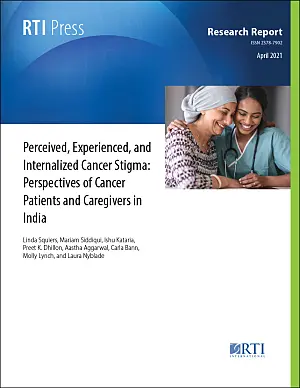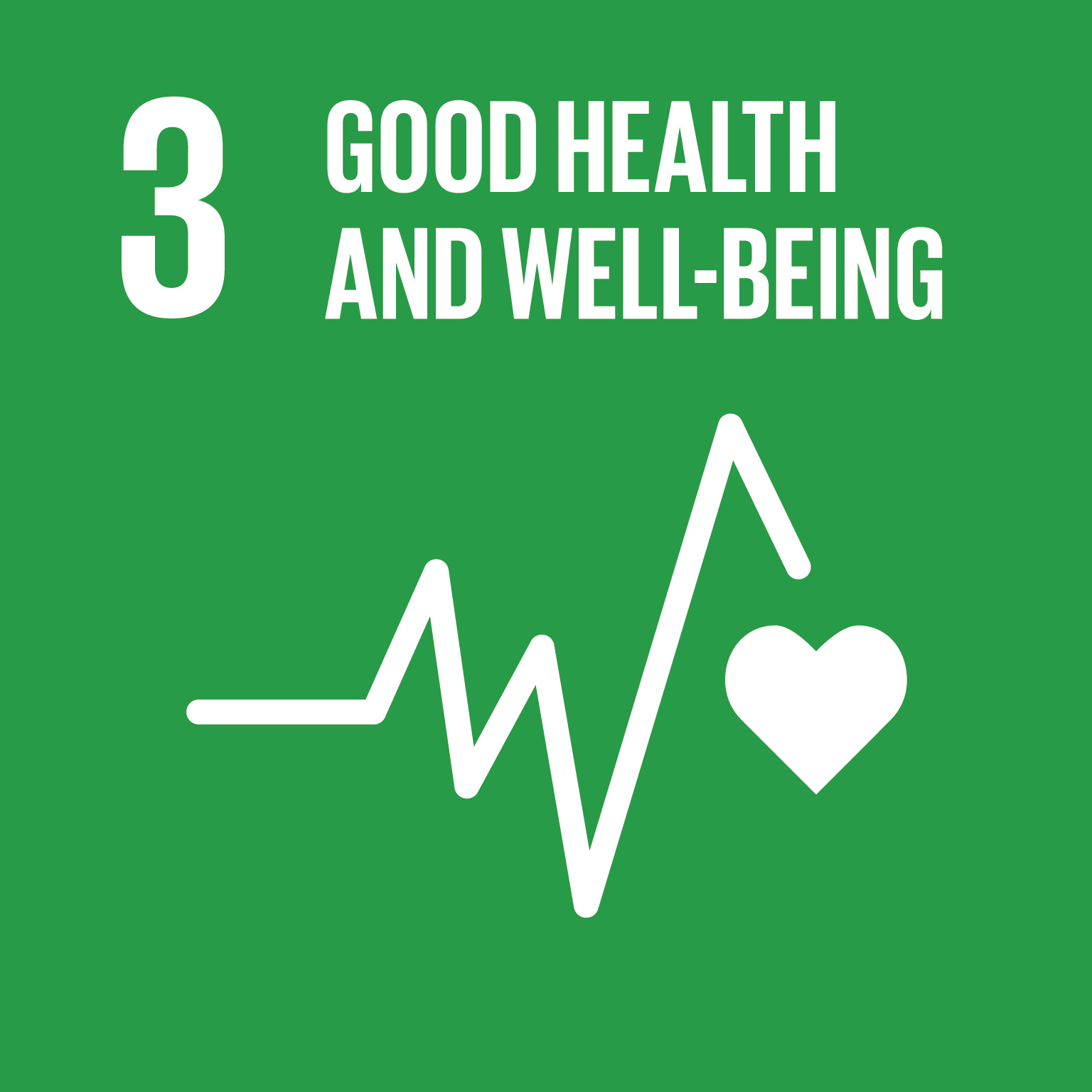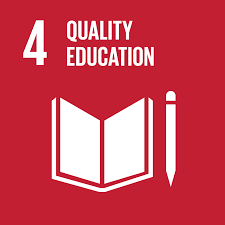Introduction
The burden of cancer is growing globally, with rising rates of incidence and mortality (Bray et al., 2018). India, for example, has high rates of breast, cervical, and ovarian cancers for women and oral, lung, and stomach cancers for men, with the number of total new cancer cases for 2018 estimated at over 1.1 million and the number of cancer deaths close to 800,000 (Cancer India, 2018). Given the increasing cancer rates in India, understanding the burden of cancer on patients and their caregivers is important to improving access to care and social support. Cancer-related stigma is one potential barrier to care and support. Consequently, it is critical to understand cancer stigma in India better and the degree to which it is perceived, experienced, and internalized (Krishnan, Sivaram, et al., 2015).
Stigma is increasingly recognized as a fundamental determinant of health and health inequity (Hatzenbuehler et al., 2013), whether it is disease-specific or targeted towards marginalized groups. Disease- or health-specific stigma is defined as
a social process or related personal experience characterized by exclusion, rejection or blame that results from experience or reasonable anticipation of an adverse social judgment about a person or group identified with a particular health problem. The judgment is medically unwarranted with respect to the health problem itself…. (Weiss & Ramakrishna, 2006)
Stigma has been linked to lower uptake of screening for disease, linkage to care once diagnosed, retention in care, adherence to medication, social support, mental health, and overall poorer health outcomes for multiple conditions, including cancer (Weiss & Ramakrishna, 2006). In India, limited research has been conducted on the relationship between cancer stigma and health seeking, treatment adherence, and health outcomes (Babu et al., 2013). However, stigma has been associated with delayed presentation for diagnosis and treatment (Babu et al., 2013) and depression among breast cancer patients (Ahmed et al., 2015; Tripathi et al., 2017). There is a paucity of research on the impact of stigma on the social support and mental health of cancer patients and on secondary cancer stigma, which extends to family or other caregivers.
In India, cancer patients have reported the belief that people brought cancer upon themselves by breaking social mores, either in this life or a previous life (i.e., Karma; Kaur, 2015; Nyblade et al., 2017) or that they have breast cancer because they have “bad character” (Dey et al., 2016). Bodily changes (disfigurement) caused by cancer and its treatment can also lead to stigma (Kaur, 2015). Lack of knowledge about the causes of cancer and fear that cancer is contagious have also been identified as causes of stigma in India (Kaur, 2015; Nyblade et al., 2017; Ray & Mandal, 2004).
Manifestations of cancer stigma in India range from social isolation within the home or community, gossip and verbal abuse, reduced marriage prospects (for self or children) (Nyblade et al., 2017; Ray & Mandal, 2004), and physical separation within the home—such as distinct eating spaces and washing utensils, clothes, and living spaces (Kaur, 2015).
Understanding (1) how cancer stigma manifests among cancer patients and caregivers—who often suffer from secondary stigma, (2) the critical role of household members in providing care for patients, and (3) the potential for cancer stigma to undermine the social support for, and mental health of cancer patients are critical to developing strategies to reduce the growing burden of cancer in India (Cancer India, 2018; Krishnan, Dhillon, et al., 2015).
This exploratory pilot study, conducted in two cities in India, aimed to better understand the degree to which cancer stigma is perceived, experienced, and internalized among adults living with cancer and their primary nonmedical caregivers. The study also sought to explore the degree to which stigma is associated with cancer patients’ self-reported mental health.
Materials and Methods
We conducted an interviewer-administered, in-person survey of adults who had been diagnosed with cancer and their caregivers in Chennai and Delhi, India, between December 2017 and February 2018. The two cities were chosen to represent both southern and northern regions, respectively.
Development of Data Collection Instruments
We developed two questionnaires, one for adults previously diagnosed with cancer (hereafter referred to as patients) and one for their caregivers. Each questionnaire assessed perceived, experienced, and internalized stigma as well as demographic characteristics, cancer history (patients), perceived social support, and mental health status. The questionnaires were developed in English, translated into Hindi (for the Delhi sample) and Tamil (for the Chennai sample), cognitively tested with 10 respondents, revised, and back-translated into English.
Knowledge of Cancer
Patients and caregivers were asked whether they were previously familiar with cancer (yes/no) and how much they knew about different cancer treatments (none, very little, some, a lot) before they (or the patient) had been diagnosed with cancer.
Cancer Fatalism
Patients were asked their level of agreement or disagreement with the statement, “I feel I have cancer because it is my destiny” and “There is nothing I could have done to prevent myself from getting cancer.”
Assessments of Stigma
Perceived, experienced, and internalized stigma items were adaptions of HIV stigma items from Visser et al. (2008) and Dos Santos et al. (2014) with modifications to fit the study context of cancer in India.
Perceived Stigma
Perceived stigma (Visser et al., 2008) toward people with cancer in each respondent’s community was measured by four yes/no questions about how others in the community think about or behave toward someone with cancer. Using a four-point disagree/agree set of response options, both patients and caregivers were asked how “beliefs about cancer” affect their own or the patient’s ability to get healthcare or tell others about a personal cancer diagnosis.
Experienced Stigma
To assess the degree to which respondents experienced cancer-related stigma (Dos Santos et al., 2014; Global Network of People Living with HIV, n.d.; Visser et al., 2008), they were asked seven yes/no questions that assessed whether they had ever been excluded from social, religious, or family activities; received discriminatory remarks from family members; experienced verbal or physical harassment; or had someone say they were worried they might contract cancer from them. Respondents were asked if they had ever lost a job or a source of income because of having cancer or because they were the caregiver to someone who had cancer. Cancer patients were asked whether they had ever been denied healthcare or insurance because they had cancer.
Internalized Stigma
Internalized stigma, also called self-stigma, was measured using the following four items: (1) I feel comfortable telling others about [my/patient’s name] disease; (2) I hide that [I/patient’s name] have cancer from others; (3) I often avoid social gatherings because [I have/patient’s name has] cancer; and (4) I feel ashamed [I have/patient’s name has] cancer. Response options included strongly disagree, disagree, agree, or strongly agree.
Mental Health
Mental health status was assessed through the Patient Health Questionnaire-4 (Kroenke et al., 2009; Stanhope, 2016)—a tool for screening patients for anxiety and depression—by asking respondents how often they had been bothered by problems as a result of having cancer. Response options included never, once or twice, several times, or most of the time.
Sample
A convenience, purposive sample of cancer patients and caregiver dyads was drawn from the ongoing Cardiometabolic Risk Reduction in South Asia (CARRS) Surveillance Study. CARRS is conducted by the Public Health Foundation of India and Centre for Chronic Disease Control (CCDC) and includes two different cohorts with a total population of over 20,000 adults aged 20 to 99 from the cities of Delhi and Chennai. At the time of the study, 56 total cancer patients were in the cohort: 25 in Chennai and 31 in Delhi. Of these patients, we purposively sampled 20 individuals—10 from Chennai and 10 from Delhi. Respondents were eligible if they (1) had previously reported they had cancer; (2) were between 30–80 years old; (3) were fluent in English, Hindi, or Tamil; (4) were willing and able to participate in an interview; and (5) had a caregiver who also was willing and able to participate in an interview.
Within the CARRS cohort in Delhi, we had difficulty finding enough cancer patients who met all eligibility criteria, especially having a caregiver who was also willing and able to participate. For one cancer patient, the caregiver was a minor and for a second, the caregiver had died. Because the number of people with cancer in the CARRS sample was small, we did not have additional cancer patients to recruit. To ensure we had an equal number of caregivers from Delhi and Chennai, we recruited one caregiver of a patient who had recently passed away and another of a patient who was older than 80 year of age. We used this approach because data were analyzed in aggregate rather than within dyads.
Three attempts were made to reach sampled respondents by telephone by a CARRS cohort study team member. Once an appointment was scheduled, the prospective respondent was contacted by telephone a day in advance to confirm the appointment or, if needed, to reschedule. The cancer patients and their caregivers were interviewed separately. Details of scheduling attempts were maintained in a tracking log.
Data Collection Methods
Trained interviewers conducted in-person interviews in respondents’ households. They received 6 days of training on interviewing methods, informed consent, questionnaire content, and in-depth practice using the questionnaire with the research staff. On the day of the scheduled appointment, the purpose of the study was explained again to the respondent and written informed consent was administered in the local language. The interview was conducted in either Hindi (in Delhi) or Tamil (in Chennai) and audio-recorded. Audio-recordings, field notes, and questionnaires were randomly checked for accuracy and completeness by the field supervisors.
Data Management
Each respondent was assigned a unique study identifier to maintain anonymity. All audio-recordings, scanned copies of field notes, screeners, signed consent forms, and questionnaires were stored on password-protected computers. Survey data were entered manually into Microsoft Excel by a two-member data entry team and checked for quality.
Data Analysis
Survey data were analyzed using SAS version 9.4. Descriptive statistics (frequencies and percentages) were calculated for all three stigma types (perceived, experienced, and internalized stigma). For experienced stigma, scores were calculated for each source group of stigma and for the total combined, with a respondent scored as having a particular type of stigma if they answered yes to at least one of the items measuring that type of stigma. Negatively worded stigma items were reverse scored. We computed Pearson correlations between the different forms of stigma and mental health. Before conducting correlation analyses, we recoded mental health scores so that a higher mental health score indicated more positive (better) mental health and lower score meant more negative (worse) mental health.
Results
Of the 20 patients contacted to participate in this study, three declined to participate. To replace those three individuals, we re-examined the roster of the remaining cancer patients in the registry and selected an alternate who most closely matched the characteristics of the originally sampled patient in terms of location, sex, age, and cancer type. The final sample included 20 patients and caregivers, with 10 from Chennai and 10 from New Delhi.
Background information on the sample is summarized in Table 1. The patient sample was 60 percent female and relatively evenly distributed across age categories. Most patients were married (60 percent) or widowed (35 percent). Most patients (85 percent) had some secondary school or a higher level of education. Caregivers had similar demographic characteristics as the patients, except that half of caregivers reported not being covered by health insurance.
Table 1.
62875Sociodemographic characteristics of patients and caregivers
N/A = not applicable.
Cancer Knowledge and Fatalism
Before their own diagnosis, 80 percent of patients reported knowing nothing about how to prevent cancer, and 75 percent knew nothing about different ways cancer could be treated. Most of the 20 patient respondents (85 percent) agreed they felt they had cancer because it was their destiny, compared with 40 percent of the 20 caregivers. Almost all patients (90 percent) agreed that there was nothing they could have done to prevent themselves from getting cancer, compared with 55 percent of caregivers.
Perceived Stigma
The proportion of patients and caregivers who perceived there was stigma toward people with cancer in their community was similar, except for two items: more patients (65 percent) reported that neighbors are typically not told if someone has cancer compared with caregivers (36 percent); and more patients (40 percent) than caregivers (25 percent) agreed that beliefs about how or why people get cancer make it difficult for them to get healthcare (Table 2). Overall, 85 percent of patients and 65 percent of caregivers agreed to least one measure of perceived stigma (Table 3).
Table 2.
62876Perceived, experienced, and internalized stigma by the patient and their caregiver
*Term added because item was reverse coded so that agreeing with the statement indicated stigma. N/A = not applicable.
Note: Percentages are based on the number of respondents who provided an answer to each question.
Table 3.
62877Percentage of participants experiencing each type of stigma (answered yes to at least one of the items for each type of stigma)
CI = confidence interval; N/A = not applicable.
Note: Percentages are based on the number of respondents who provided an answer to each question. CIs are based on a Fisher’s exact test.
Experienced Stigma
Across the three dimensions assessed for experienced stigma, 60 percent of patients reported having experienced at least one form of stigma because of having cancer (Table 3), whereas 30 percent of patients reported experiencing at least one form of stigma from family or community members, with most stigmatizing experiences being from family or friends. One-quarter of patients reported having had someone say they were worried they might contract cancer from them, and 15 percent reported they had been aware of discriminatory remarks that family members had made about them because of their cancer. Although no patient reported being denied healthcare because they had cancer, 25 percent reported being denied health insurance because they had cancer (Table 2).
Internalized Stigma
Overall, 35 percent of patients and caregivers endorsed at least one measure of internalized stigma (Table 3). Although 30 percent of patients reported feeling ashamed they had cancer, no caregiver said they felt ashamed of the patient for having cancer (Table 2).
Mental Health
As a result of having cancer, 40 percent of patients reported having little interest or taking pleasure in doing things; 30 percent felt nervous, anxious, or on edge; 30 percent felt they could not stop or control worrying; and 15 percent felt down, depressed, or hopeless either several times or most of the time in the past 2 weeks (Table 4).
Table 4.
62878Patients’ self-reported mental health as a result of cancer
Note: Percentages are row percentages and based on the number of respondents who provided an answer to each question.
Correlations between each type of stigma and mental health showed that internalized stigma seemed to be negatively associated with overall mental health (Table 5). Specifically, having any internalized stigma seemed to have a moderate association with feeling nervous and anxious, uncontrolled worrying, and feelings of depression and hopelessness. Given the small sample size, it was not possible to test for statistical significance.
Table 5.
62879Correlations between stigma and social support and mental health: patients only
Note: Bolded correlations have moderate [r = 0.3] (Cohen, 1988) correlations.
Discussion
Very few studies have assessed the degree to which patients in India feel stigmatized because of their cancer diagnosis (Hatzenbuehler et al., 2013; Krishnan, Sivaram, et al., 2015; Shet et al., 2015; Weiss & Ramakrishna, 2006). Although limited by the small sample size, this exploratory pilot study provides some of the first quantitative data on cancer stigma from the patients’ perspective in India and, to the best of our knowledge, the first data on cancer stigma in India from the caregivers’ perspective.
We found that cancer-related stigma is common, as measured by agreeing with at least one statement within each type of stigma, among both patients (85 percent) and caregivers (75 percent). Among the different types of stigma measured (i.e., perceived, experienced, and internalized), perceived stigma within the community was noted most frequently. These results are consistent with other studies on perceived cancer stigma in India. For example, fear of casual transmission of cancer through day-to-day interaction, which was linked to social and physical isolation of patients, has been documented in qualitative studies in India (Broom & Doron, 2012; Kaur, 2015; Nyblade et al., 2017; Ray & Mandal, 2004). In our study, one-quarter of patients (25 percent) and almost one-third of caregivers (31 percent) perceived that people in the community are afraid cancer can spread from person to person. In addition, a substantial proportion of participants (17 percent of patients and 31 percent of caregivers) perceived that people in the community avoided talking or eating with a person who has cancer. One-quarter of patients (25 percent) reported that someone had told them they were worried they might contract cancer from them, illustrating that the perceived stigma is grounded in lived experience.
Qualitative studies in India have documented the belief that cancer is something one (Kaur, 2015; Nyblade et al., 2017). We found that one-quarter of patients (25 percent) and over one-third of caregivers (35 percent) perceived that people in the community believe that cancer is a curse or the result of past sins, which may be the source of perceived, experienced, and internalized stigma. Future studies should explore whether these beliefs are at the root of cancer stigma and if messages to dispel them would be accepted within different religions and subcultures in India.
We observed that the majority of patients (85 percent) experienced at least one form of stigma and that over one-third of both patients and their caregivers (35 percent) endorsed at least one internalized stigma item. Our results also suggest that there may be a relationship between internalized stigma and poor mental health among patients. Although this study was unable to determine a causal linkage, future work should explore this potential association, especially in countries such as India where fatalistic beliefs about cancer are prevalent. Understanding the relationship between fatalistic views, internalized stigma, and mental health could help identify relevant modifiable risk factors for stigma and stigma-related mental health problems and inform the development of interventions to support cancer patients before, during, and after treatment.
Although caregivers reported cancer-related stigma within their communities, they generally did not report being personally stigmatized as a result of being a caregiver. Nevertheless, 30 percent still said they did not feel comfortable telling others that they provide care to a cancer patient, and 20 percent hid that the person for whom they cared had cancer. This finding may suggest that caregivers either feared the reactions from others or believed that it is socially unacceptable to discuss someone else’s cancer. Reasons should be clarified in future research.
The most notable limitation of this exploratory pilot study is that it relied on a sample of convenience and had limited statistical power. It is also worth noting that the CARRS cohort (a part of the National Institutes of Health 2-year planning grant to develop a Regional Centers of Research Excellence in Non-communicable Diseases in India [P20]) recruited from urban populations; therefore, the results may not apply to rural populations in India. Additionally, although the length of time since cancer diagnosis among participating patients varied, the small sample size did not allow assessment as to how this factor might influence perceived, experienced, and internalized stigma. Finally, we adapted stigma measurement from other stigmatized conditions because of a lack of validated cancer stigma scales for India. Future studies should evaluate the instruments used for validity and reliability for assessment of cancer stigma in India. The applicability of certain questions and measures across disease conditions suggests common platforms for addressing stigma for conditions such as HIV and cancer.
Despite its limitations, this exploratory pilot study provides some of the first quantitative findings on cancer stigma in India and confirms some of the themes that have emerged from qualitative studies on cancer stigma. It also demonstrates the potential utility of measuring cancer stigma quantitatively.






